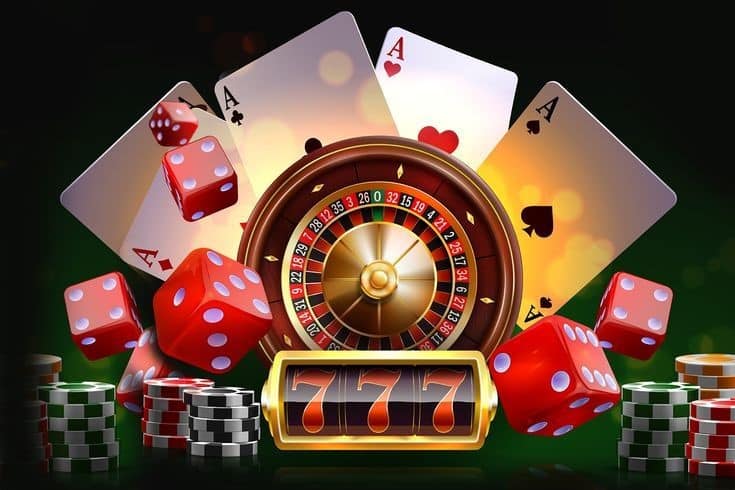The Psychological principles Behind Gambling Game Development

Casino experiences have long captivated people's attention, drawing players into a realm filled with luck, tactics, and the allure of adventure. Each experience is painstakingly crafted not just for fun, but also to evoke targeted emotional responses that keep gamblers engaged and invested. Understanding the motivations behind these designs reveals much about how behavioral psychology plays a crucial role in the gaming experience.
From the vivid lights and lively sounds to the intricate layering of systems and rewards, casino games are designed to create an atmosphere of excitement and anticipation. Game designers leverage mental cues to influence player behavior, whether through the use of big prizes, near-miss scenarios, or social interactivity. By examining these factors, we can better appreciate how casino games fulfill not just a want for entertainment, but more profound psychological needs for thrill and risk.
Understanding Player Behavior
Casino games are designed with a thorough grasp of gamer psychology, which is essential for luring and retaining players. betflik The thrill of the game, combined with the expectation of winning, produces a strong attraction. Game designers employ elements like audio cues, colorful graphics, and engaging gameplay to seize attention and elicit emotional responses. These sensory elements enhance the immersive experience, making players feel more invested in the game.
Another notable aspect of player behavior is the concept of risk and reward. Casino games often balance high-risk scenarios with the potential for significant rewards, which can lead to the event known as near-miss phenomenon. When players come within reach to winning, the brain produces dopamine, reinforcing their behavior and prompting them to persist playing in pursuit of that hard-to-reach win. This cycle of wish and disappointment plays a key role in how games are designed and promoted.
Lastly, social elements also play a critical role in player behavior at casinos. Many games are made to be played in teams or in company with other players, nurturing a sense of belonging and shared experience. The social interaction inherent in games like baccarat enhances enjoyment and can culminate in extended gameplay. Designers take advantage on this by designing environments that invite players to stay, socialize, and come back, making the overall casino experience more inviting.
The Role of Imagery and Sound
Visuals and sound play a vital role in elevating the gambler’s experience within gambling games. Designers utilize bright colors, striking graphics, and captivating animations to grab players' attention and maintain their interest. The use of motifs, such as exploration or luxury, helps create an immersive atmosphere that transports players into a different world. By appealing to the senses, these elements contribute to a heightened emotional response, encouraging players to interact more profoundly with the games.
Sound design is equally important in enhancing the experience of casino games. The combination of ambient music, audio effects for successful combinations, and ambient noises creates an sound landscape that holds players fascinated. Sounds associated with wins, such as ringing bells or festive music, evoke feelings of excitement and reward, encouraging players to continue playing. These sound cues are strategically placed to amplify the thrill of the game and create a more immersive experience.
Moreover, the alignment of imagery and sound is important for reinforcing the game's overall concept and atmosphere. Each element should align harmoniously to create a unified experience that draws players in. The effective use of this synergy not only enhances user satisfaction but also increases the likelihood of return play, as players become more invested in the captivating world that the casino games offer. This thoughtful combination of imagery and sound ultimately enhances player engagement and loyalty.
Reward Systems and Participation
The creation of casino experiences greatly relies on incentive structures to ensure players engaged and coming back for more. These structures are rooted in psychological theories that take advantage of human nature and motivation. Participants are often driven by the thrill of success, which is supported by immediate responses through the game's mechanics. This instant gratification not only enhances the gaming experience but also cultivates a sense of success, prompting players to keep playing in hopes of bigger rewards.
Casinos utilize various incentive systems, including large payouts, extra rewards, and multipliers, to engage players. These features create a layer of excitement that sustains engagement. Additionally, the unpredictability of outcomes plays a significant role in keeping interest. The variable reward system, where successes are random but occur often enough, keeps players on edge and motivated to keep playing. This loop of hope and expectation is essential to the effectiveness of gambling experiences.
Furthermore, community aspects, such as tournaments and collaborative options, boost the participation factor by tapping into the desire to compete of players. The shared experience of gaming with fellow participants can amplify the thrill of success and create a sense of community within the gaming space. By combining these community elements with effective incentive structures, casino games don’t just offer entertainment but also nurture a stronger connection among players, reinforcing their commitment to the gaming experience.
